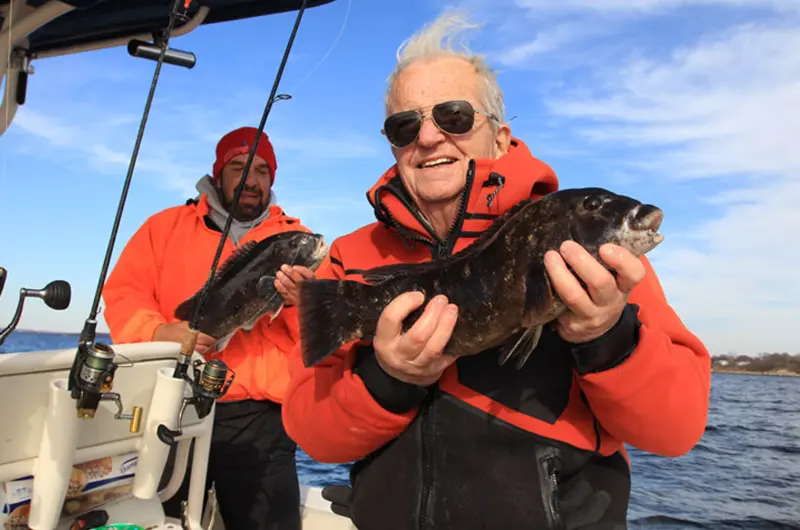
If you live above the Mason-Dixon Line, November is pretty much the end of the line when it comes to the recreational boating season. There just comes a point where it’s generally too cold, too snotty, and not safe to make venturing out a reasonable venture. That means it’s time to close up shop by winterizing your boat and motor and stowing it until spring finally rolls back around.
For those living in warmer climates boating season may not have to come to an end, but it’s still important to do a full winter review on your vessel. Those who boat throughout the year put added miles, stress, and wear and tear on their boats with continuous use. While winterizing your boat may not be needed, it’s always a good idea to set a few hours aside and give your craft a full once-over as if you are ready start a brand new season so you can nip potential problems in the bud before they grow into full-scale inconveniences or worse. If you trailer, now is a good time to perform a trailer check as well.
Following are some thoughts and tips on winterizing your boat, as well as a mid-season check for those who are year-round boaters. Note that these are basic starting points. If you discover any unexpected or potentially serious problems, a visit to a boat shop for a more complete inspection is probably in order.
Full Winterization
It boils down to giving your vessel a serious deep cleaning and removing any remaining water so it will not corrode engine parts or freeze and expand, damaging the motor in the process. Different types of motors require different materials and methods to be fully winterized. Check your operator’s manual for details.
Start with a thorough cleaning of the cabin, heads, kitchen, and helm. Scrub the topsides with a non-skid deck cleaner to get the dirt out of all the crevices. Next, clean all teak, plastic, glass, and vinyl, plus your canvas. Apply a fresh coat of waterproofing to the canvas if necessary. Be sure to wax the topside and all exposed fiberglass as well. Use an acid-based hull or bottom cleaner to remove any fouling and ensure you have a clean surface in the spring to repaint if necessary.
Next, check all fluid levels including the oil, coolant, steering fluid, transmission/lower unit fluid, and outdrive oil. Inspect all fuel lines for cracking and flexibility and replace any that show wear or stiffness. Grease any hardware as per your operation manual. Top off your fuel tank and add a fuel stabilizer to prevent water from forming in the bottom or varnish from building up in the lines, fuel injector, or carburetor.
Finally, drain any remaining water from the engine, fuel system, plumbing system, or any other system that can hold water. Then you’re ready to fully winterize the motor per manufacturer instructions.
Mid-Season Check-Up
If you boat year-round, consider this to be just like starting a new season. Begin with a battery check to see if it is fully charged. Take a minute to clean the terminals and cable ends with a stiff wire brush and replace wing nuts with stainless steel lock nuts. This helps prevent the cables from loosening up. Note that the Coast Guard requires batteries to be properly secured with the battery posts covered, so make sure the cover caps are still in place.
Next, check all switches and knobs. Turn on all lights, blow your horn, run the livewell and wash down to ensure all switches are working. Check all helm and cabin switches and note for repair any that aren’t working properly. If you have an automatic bilge, ensure the pump float switch is working, along with the switch for manual operation.
Check all engine fluid levels including the oil, coolant, steering fluid, transmission/lower unit, or outdrive oil. Visually inspect all fuel lines for cracking and flexibility and replace any that show wear or stiffness. Grease any hardware as per your operation manual.
If all is good at this point, turn the engine on and listen carefully for loose belts. Double-check all hose connections and make sure the steering wheel turns freely and smoothly in all directions. Check to ensure everyone and everything is clear of the engine and then shift it into forward gear, reverse, and back to neutral.
Lastly, confirm your engine cut-off switch actually works. Turn off the engine by removing the lanyard to prove the switch is operating properly, and then remove the key. Once you’re satisfied, it’s time to cruise.
For more information on winterizing your boat or other boat maintenance resources, visit the Sea Tow Blog.
MEMBER BENEFITS BEYOND 24/7 TOWING
As the premier leader in on-water boating assistance, Sea Tow members receive the most comprehensive benefits available. Membership includes a full suite of on-water assistance services for every boat you own, rent lease or bareboat charter. Learn more about our membership options today. To find the Sea Tow closest to you, use our service locator or call our Customer Care Team at 800-4-SEATOW.

